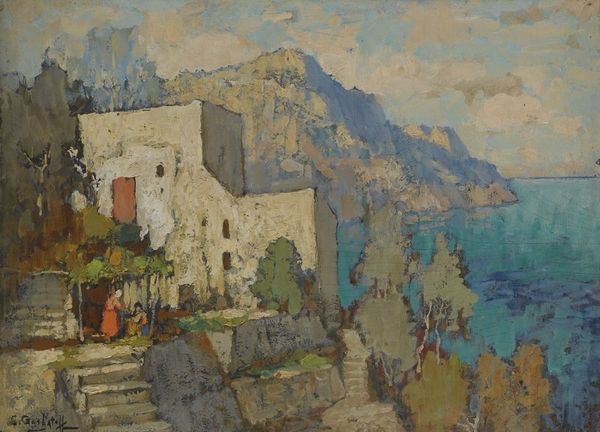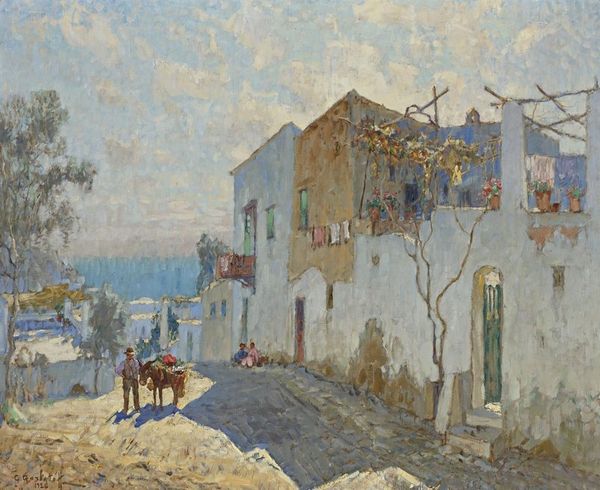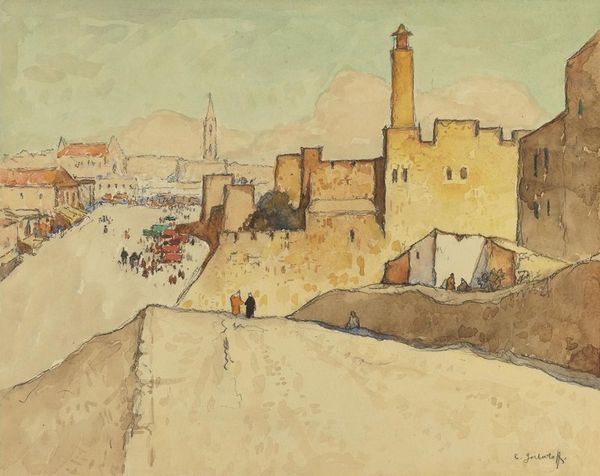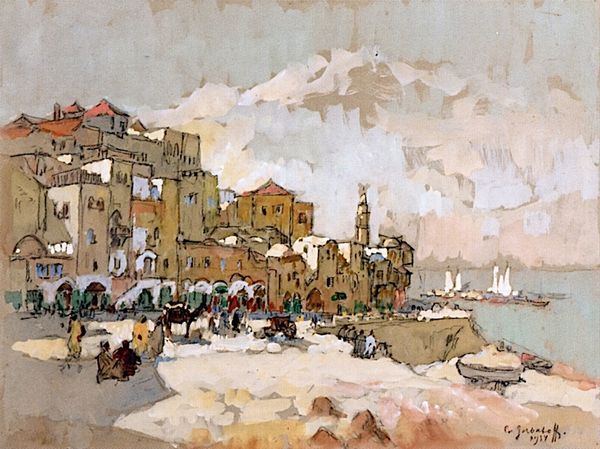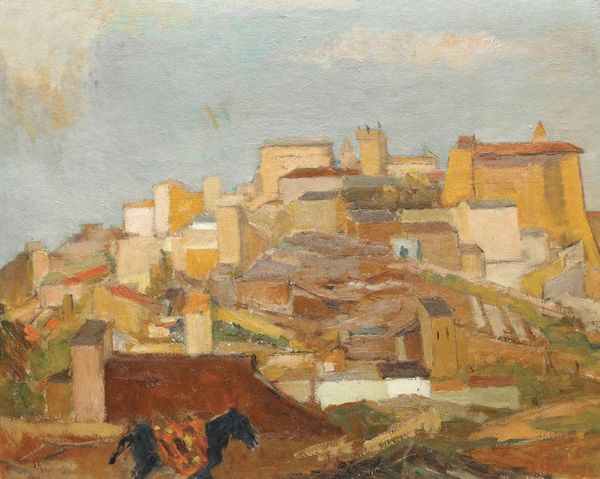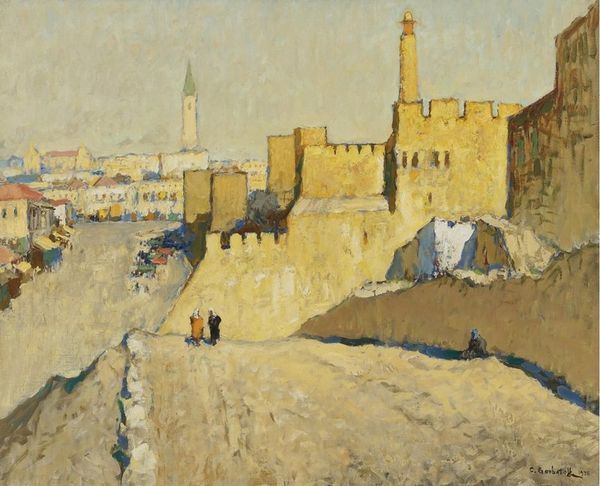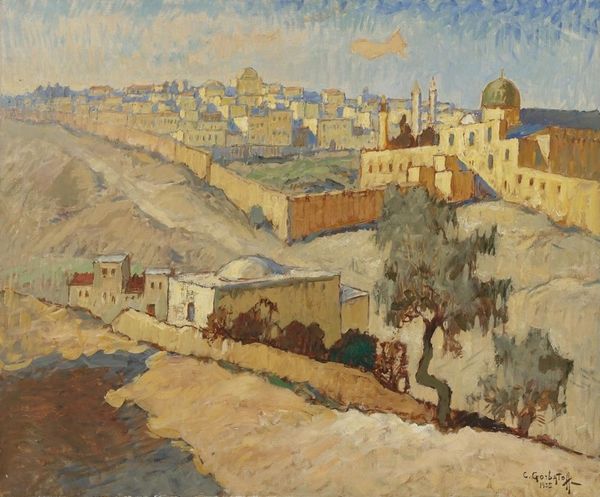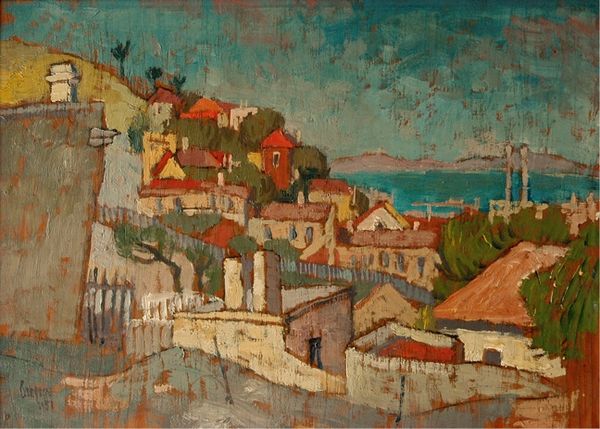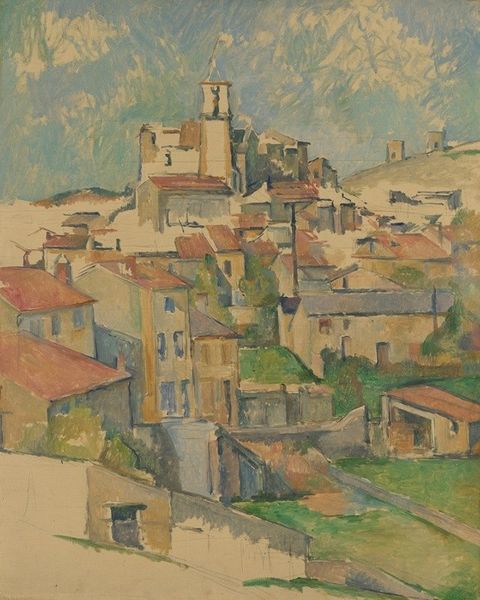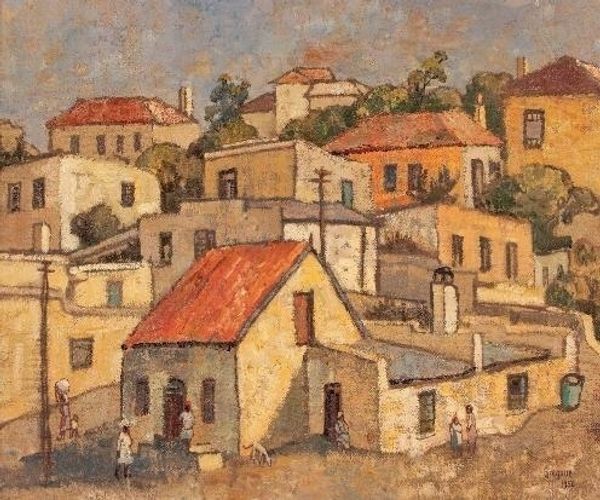
#
abstract painting
#
impressionist painting style
#
impressionist landscape
#
possibly oil pastel
#
oil painting
#
acrylic on canvas
#
underpainting
#
painterly
#
painting painterly
#
watercolor
Copyright: Public domain
Curator: Looking at "Tiberia," painted in 1933 by Konstantin Gorbatov, the eye is immediately drawn to the striking use of light, isn't it? Editor: Yes, there’s a distinctive almost Mediterranean sun-baked feel to it. But my first impression is of shadows, deep and geometric, playing against the architecture. What's your take? Curator: Well, it certainly reflects a turbulent period. Gorbatov, although celebrated in pre-revolutionary Russia, had to leave the country in 1922 and in the 1930s became quite nostalgic. So you are witnessing an émigré artist viewing the biblical landscapes with melancholic vision. He’s looking back. Editor: Nostalgia definitely permeates this work; I see echoes of the Orientalist imagery common in the late 19th and early 20th centuries. The minaret and domed building are visually compelling, standing as symbols for faith and perhaps stability within a time of tremendous flux. But, if we focus on the material culture in play, these figures with their indistinct ethnic features trigger memories, inviting the spectator to wander through it in a specific and predetermined fashion, recalling certain pre-set exoticized memories. Curator: That's fascinating, viewing the religious and ethnic features. Tiberias, today an Israeli city, was central to Jewish life and scholarship for centuries. Highlighting the landscape and architectural elements is an almost deliberate removal of recent turmoil to focus on timeless aspects, no? Gorbatov strips down these details, providing universalizing rather than identifying imagery. Editor: Exactly. Notice how the color palette favors earth tones – tans, browns, and muted blues. It reinforces the sense of historical distance. I read these figures almost as placeholders of a collective memory rather than active characters in a bustling locale. There’s more happening beyond what's obviously happening, no? Curator: Definitely. Gorbatov's impressionistic style also lends to the emotional weight; that blurriness almost makes it more felt. There’s that undercurrent of longing…a beautiful, thought-provoking piece when you consider its sociopolitical context. Editor: Indeed. By playing with form and visual shorthands Gorbatov prompts us to contemplate shared past and to think of history beyond factual detail.
Comments
No comments
Be the first to comment and join the conversation on the ultimate creative platform.

